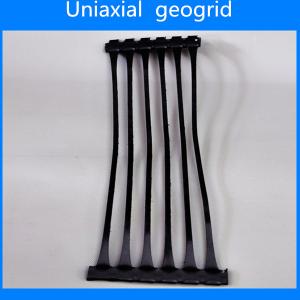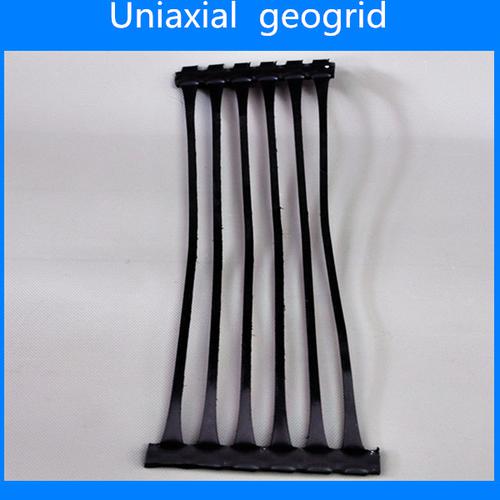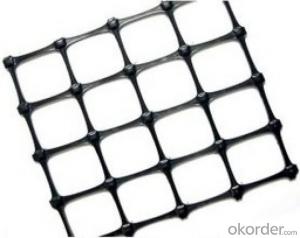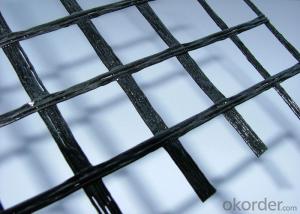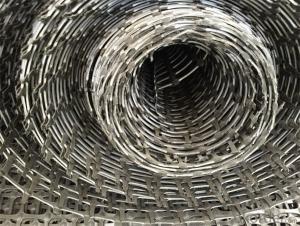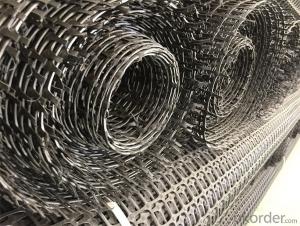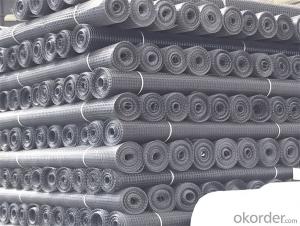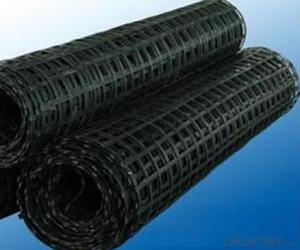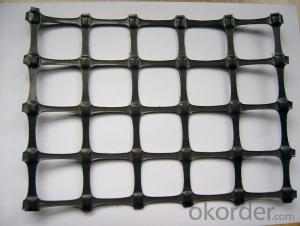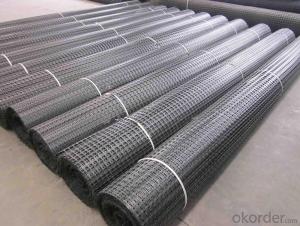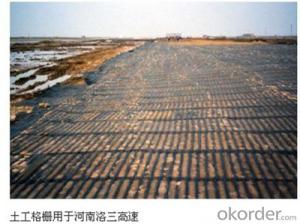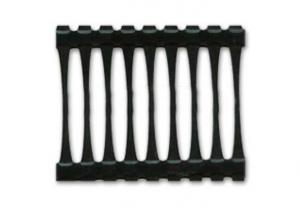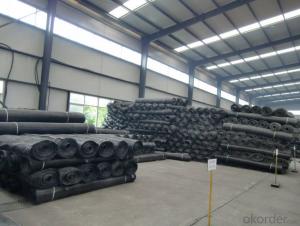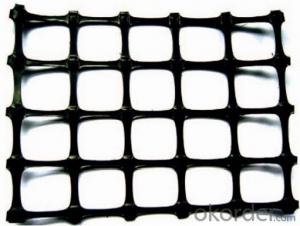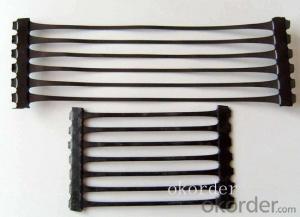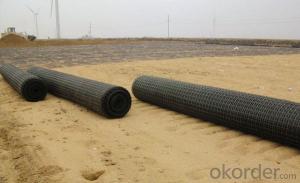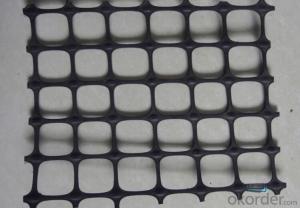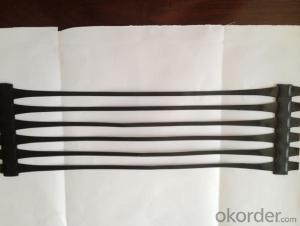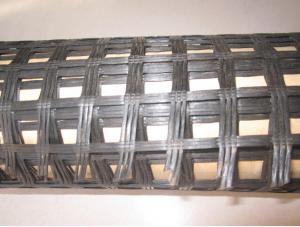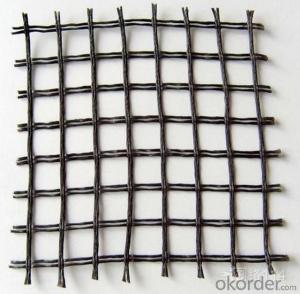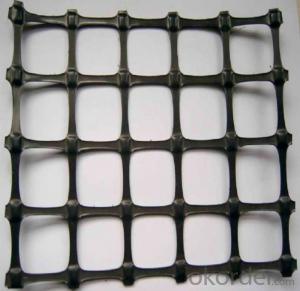Uni-directional Plastic Geogrid Slope Erosion Geocells
OKorder Service Pledge
OKorder Financial Service
You Might Also Like
Item:PP Uniaxal geogird
1.Material:PP
2.Tensiel strength:30KN/M
3.Size:2.5m*50M
4. Elongation:10%
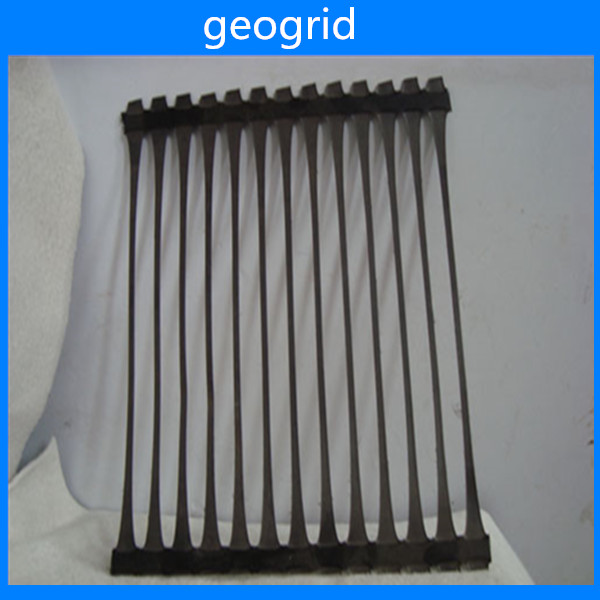
Uniaxial geogrid ,made of high molecular polymer ,is extruded into sheet and then punched into regular mesh patten,and finally stretched in the longitudinal direction.
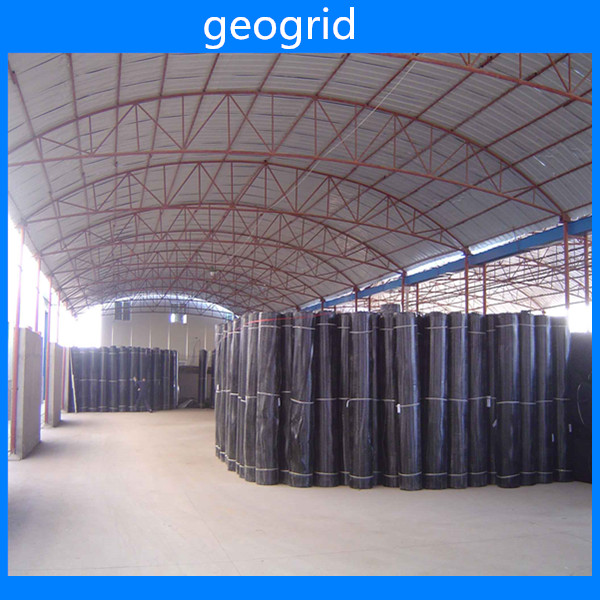
Feature:
With high tensile strength and tensile modulus
Function:
Uniaxial goegrid is mainly applied in highway,railway,slope protecting projects,retaining wall,dam to strengthen land loading capacity and extend its service life.Features in reducing area,project cost and matentainence cost,convenient to construct.
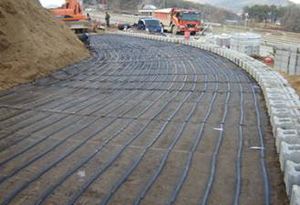
- Q: The ground treatment is full of geogrid is not along the line direction
- Generally paved along the direction of the road
- Q: Geogrid standard geogrid price geogrid role
- plastic geogridThe plastic geogrid is a kind of polymer material with square or rectangular shape which is formed by stretching, and it can be used as two kinds of uniaxial tension and biaxial tension. The utility model is punched on the extruded polymer plate (raw material is polypropylene or high-density polyethylene), and then directionally stretched under the heating condition. The unidirectional stretching grid is only drawn along the length direction of the plate, and the bidirectional stretching grid is made by stretching the unidirectional stretching grid in the direction perpendicular to the length. As the polymer in the manufacture of plastic polymer in the process of heating with the extension of the process of re orientation, strengthen the link between the molecular chain force, to achieve the purpose of improving its strength. Its elongation rate is only 10% ~ ~ of the original plate of 15%. If the carbon black and other anti-aging materials are added in the geogrid, the utility model has the advantages of good acid resistance, alkali resistance, corrosion resistance, aging resistance and the like. The bidirectional geogrid two-way geogrid is made of high molecular polymer through extrusion, plate forming, punching process and then longitudinal and transverse stretching. The material has great tensile strength in both longitudinal and transverse directions, the chain system of this structure in the soil can also provide a more effective force to bear and spread of the ideal, to adapt to the foundation of unidirectional geogrids uniaxial geogrid in the large area of a permanent load is a polymer by extrusion pressure a thin plate and punching network rules, and then the longitudinal stretch. This process make the linear polymer into a state of orientation and form long oval mesh structure integrity and uniform distribution of nodes with high intensity. The structure has very high tensile strength and tensile modulus,.
- Q: What is the typical geogrid roll thickness for specific applications?
- The typical geogrid roll thickness for specific applications can vary depending on the specific project requirements and site conditions. However, geogrid rolls typically range from 2 to 10 millimeters in thickness for common applications such as soil stabilization, retaining walls, and road construction.
- Q: How do geogrids improve the performance of geosynthetic tube structures?
- Geogrids improve the performance of geosynthetic tube structures by providing enhanced strength and stability. They act as a reinforcement element, distributing and transferring loads more efficiently across the structure. This reinforcement helps to mitigate potential deformations and structural failures, ultimately increasing the overall performance and longevity of the geosynthetic tube structures.
- Q: What is the recommended overlap distance for geogrid seams?
- The recommended overlap distance for geogrid seams is typically around 1 to 2 feet.
- Q: What are the factors that affect the quality of glass fiber reinforced plastic grid
- The first is glass fiber. Glass steel fiber can improve the tensile strength and the elastic modulus of FRP pultruded grating plate, but also can reduce shrinkage, improve the heat deformation temperature and low temperature impact strength, therefore is glass steel grille pultrusion cover the main load-bearing part.
- Q: What are the long-term maintenance requirements for geogrids?
- The long-term maintenance requirements for geogrids are generally minimal. Once installed properly, geogrids do not require frequent or extensive maintenance. However, periodic inspections should be conducted to ensure the geogrids are functioning effectively and to identify any potential issues such as damage or excessive soil accumulation. In case of any problems, repairs or replacements may be necessary to maintain the geogrids' performance and longevity. Overall, regular monitoring and timely interventions are crucial for ensuring the long-term effectiveness of geogrids.
- Q: How do geogrids enhance the performance of geosynthetic clay liner drainage systems?
- Geogrids enhance the performance of geosynthetic clay liner drainage systems by providing additional reinforcement and stability to the clay liner. They help distribute the load more evenly, reducing the potential for settlement or deformation. Additionally, geogrids can increase the overall strength and resistance to shear forces, improving the overall performance and lifespan of the drainage system.
- Q: What are some common standards and specifications for geogrids?
- Some common standards and specifications for geogrids include ASTM D6637 (Standard Test Method for Determining Tensile Properties of Geogrids by the Single or Multi-Rib Tensile Method), ASTM D5262 (Standard Test Method for Evaluating the Unconfined Tension Creep and Creep Rupture Behavior of Geosynthetics), and ISO 10318 (Geosynthetics - Wide-width tensile test). These standards provide guidelines for testing and measuring the tensile strength, creep behavior, and other mechanical properties of geogrids.
- Q: Are geogrids suitable for use in mining tailings ponds?
- Yes, geogrids are suitable for use in mining tailings ponds. Geogrids provide excellent reinforcement and stabilization properties, helping to prevent soil erosion and maintain the structural integrity of the tailings pond. Additionally, geogrids are durable and resistant to chemicals and harsh environmental conditions, making them an ideal solution for containing and managing mining waste in tailings ponds.
Send your message to us
Uni-directional Plastic Geogrid Slope Erosion Geocells
OKorder Service Pledge
OKorder Financial Service
Similar products
Hot products
Hot Searches
Related keywords
